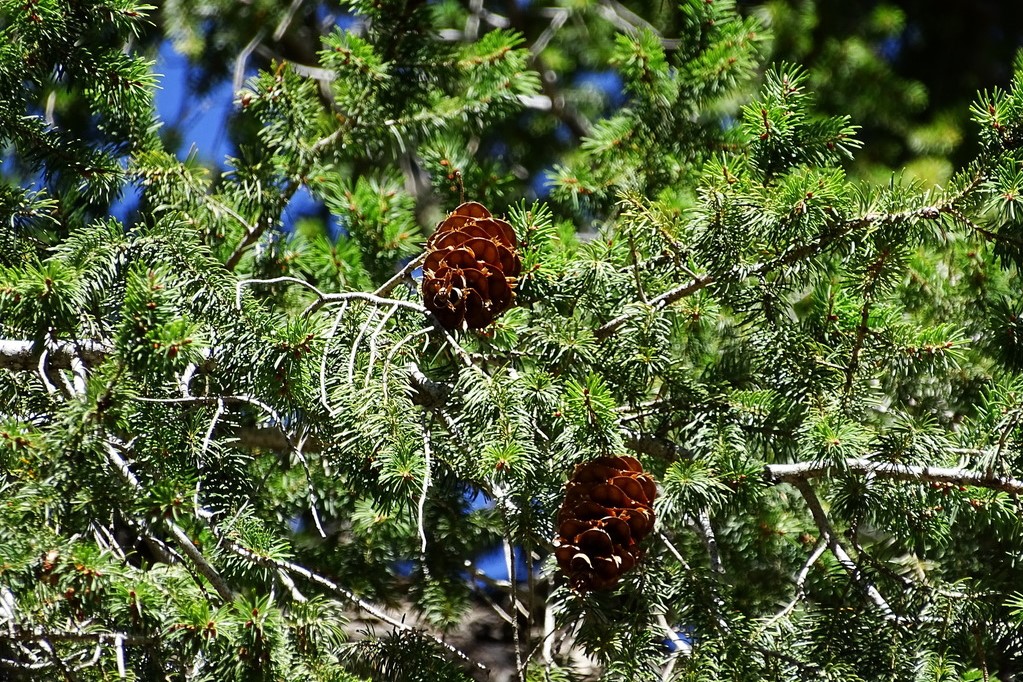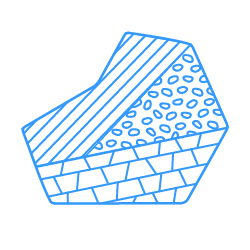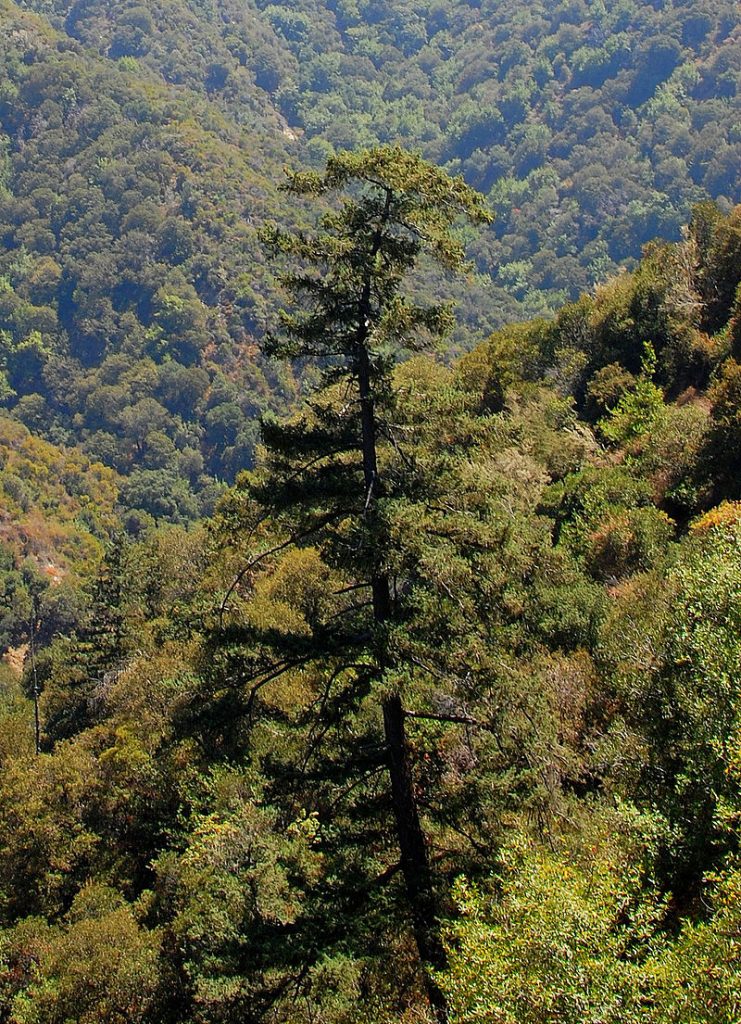
The bigcone Douglas-fir’s relative, Pseudotsuga menziesii, is a popular Christmas tree species.
FAMILY
Pinaceae, a conifer family for which fossils date back to the Cretaceous Period (145.5 million years ago to 66 million years ago)
RANGE
Endemic to Southern California
Important Environmental Factors

At least ~800 meters above sea level

Non-alluvial substrate

Low to moderate annual rainfall (<1,200 millimeters)
Species Ecology
Bigcone douglas-fir is an evergreen conifer endemic to Southern California, where it thrives in the Mediterranean climate. It can grow 50 to 100 feet tall, with branches as long as 20 to 50 feet. The cones are 4-7 inches long [1]. They have long lifespans—trees commonly reach 250 years—and the oldest known tree is believed to be 600-700 years old. They provide habitat for many species, including black-tailed deer and black bears [2], and its seeds provide food for small birds and mammals.
Adaptations to Fire
Bigcone douglas-fir is able to resprout after fire, a rare ability for native California conifers [3]. It also resists bark beetle attack, unlike its pine tree relatives, which are often targeted by the beetles after fire. While their thick bark (which can be 6-8 inches thick) can protect tree trunks from severe fires [2], fires can kill seeds and, depending on the severity of the fire, very young seedlings and saplings. Very frequent fires can also stress trees and eventually reduce their ability to resprout, and may reduce population sizes.
Current Status
Because bigcone douglas-fir have a limited distribution, and are generally difficult to access, there is no longer a commercial market for its timber [2]. Populations are currently stable, and for several decades, the LA County Department of Forestry tried to use bigcone douglas-fir for watershed restoration. The species exhibits resistance to drought, fire, insects, decay, and ozone damage [4], and it is believed that it would be able to survive in even drier conditions. In fact, these trees are known to invade surrounding environments (like chaparral and oak woodlands) if unchecked by fire or other disturbances [5].

Data source:
Species records provided by Calflora and iNaturalist
References:
- Howard (1992) in Fire Effects Information System [link]
- McDonald (1990) in Silvics of North America. Volume 1: Conifers. [link]
- Gause (1966) in U.S. Forest Service Research Paper PSW-39 1966 [link]
- Miller et al (1983) in Plant Disease 67: 1113-1115.
- McDonald and Littrell (1976) in Madrono 23(6):310-320